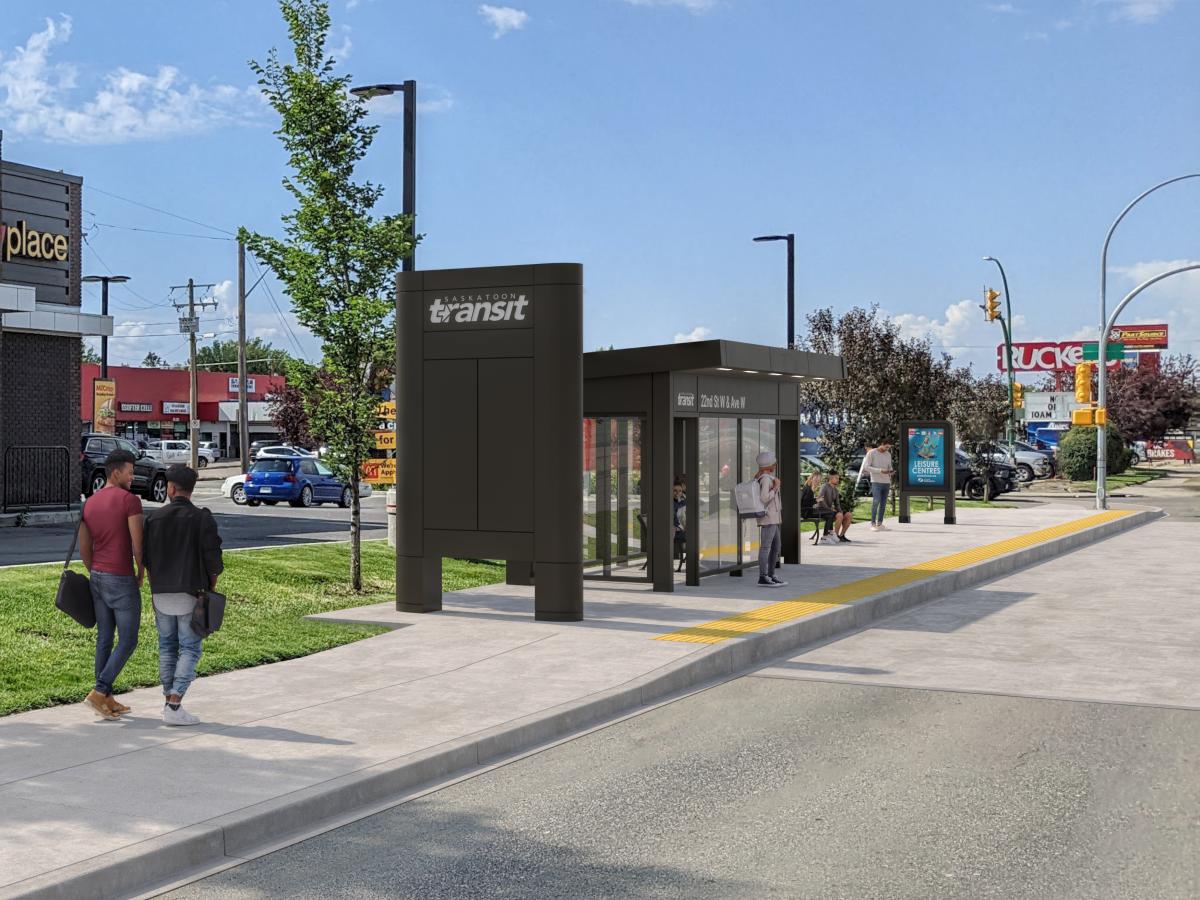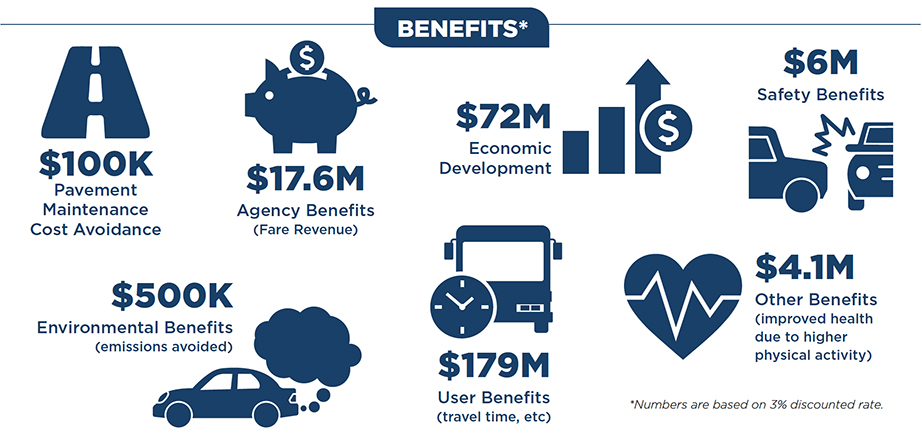Link - Project Background

Bus Rapid Transit is now known as Link - the new way to connect Saskatoon.
This project is possible through the Investing in Canada Infrastructure Program
Saskatoon is growing – by over 14,000 people last year alone. We need a way to move people around sustainably and efficiently. Link (bus rapid transit) will benefit everyone in Saskatoon, whether you take the bus, drive, walk or bike.
With funding secured from other levels of construction of some of the BRT stations will begin in 2024 with construction anticipated to take three to four years. More than 73% of the cost is being covered by our partnerships with the Province of Saskatchewan and the Government of Canada (and can’t be used for other purposes)
Link is key to sustainable growth
As our population continues to rise, we need to keep densifying our neighbourhoods and improving transit.
High-quality transit allows a city to grow without slowing traffic down. When prioritized, transit has the potential to reduce vehicle congestion, provide environmentally efficient and responsible transportation, and reduce both personal mobility expenses and overall public infrastructure expenses.
Projects like the Housing Accelerator Fund Action Plan and Corridor Planning are helping Saskatoon build transit-oriented communities as part of a strategy that uses infrastructure to support community development. It is no longer economically or environmentally sustainable for any city to continue to prioritize outward (greenfield) growth – and BRT is the backbone of Saskatoon’s plan to increase housing accessibility and create more places where people want to live, work, play and thrive.
Fast Facts: A BRT route with a high frequency will have the potential capacity to move up to 1,440 passengers per hour in each direction. One bus with 30 passengers is moves the same amount of people as 27 cars. A bus requires less street space, equivalent to two or three automobiles, and, when it is full, it requires much less energy to move each person . A full bus produces less pollution per person-trip than an automobile. Finally, because they are operated by professional drivers, buses have a lower accident rate than automobiles. By reducing the number of vehicles along major routes, the BRT system will reduce traffic congestion, reduce emissions and accidents, and decrease the need for parking across the city.
Link is key to revitalizing Downtown
The strength of Downtown and transit are connected. By removing the 23rd Street and 3rd Avenue bus terminal (which will no longer be necessary) and creating modern stations with short wait times in the core, people will be able to move quickly and efficiently into, out and through the Downtown area.
Through placing a priority on transit Downtown, visitors, employees and residents will be encouraged to take BRT, and nearby Downtown stations will become primary gateways to the District Core with ample areas to get on and off. Downtown will also prioritize transit service on 1st Avenue with centre-running transit only lanes.
In keeping with the City’s vision for a more transit-supportive Downtown, the planned Downtown Event and Entertainment District will be designed around the future BRT system. With walking, biking and transit connections radiating across Downtown, traffic congestion will be minimized and spread out to avoid bottlenecks, making parking more accessible. The BRT system is the key part of this multi-modal approach, with only 50 per cent of travelers expected to be driving to and from the District core and just as many using transit, rideshare and active models like walking, biking or other micro-mobility devices.
Link is key to future challenges - and today's
Frequent and reliable public transit opens up personal mobility to everyone, giving each person the freedom to travel anywhere in the City. Many people are unable to drive, and a number of drivers would appreciate the realistic choice to walk, cycle, or take public transit instead, at least sometimes. The BRT system, combined with housing density along the transit corridors, means that more people will have access to services within a short walk or quick bus ride.
Transit, when it is well used, produces important benefits for the community: air-quality improvements, less land consumption than an auto only transportation system, lower energy requirements and lower accident costs.
An efficient transit system can also save residents money. Each family that gets rid of one car and relies on public transit saves over $10,000 per year*. No need for car payments, insurance or repairs.
We often hear that people will never ride the bus – but in the future , the transit system will have buses come more frequently, more reliably, will get you where you want to go quicker, and will be more competitive with a car in terms of convenience.
Public art will be an important part of the Link system. Find out more about how art brings transit and community together.

*Artist rendering of a potential BRT Station
Link stations will provide a safe place to wait for the bus.
All BRT stations across the city will provide comfort in cold temperatures with on-demand heating designed to warm the shelters for short periods of time, while people are waiting for the next bus. The shelters will be designed with two entrances and will provide shelter against wind, rain or snow and will provide shelter from the sun.
Security cameras and transit shelter lighting at BRT stations will provide peace of mind for transit users. Security cameras will be installed at each station and in the event of an incident, footage will be available for review.
A BRT pilot station has been built to test all the components that will be installed at each new station. Lessons learned from planning, construction, community engagement, and maintenance are being reviewed to create a final design and operations plan.
Bus Rapid Transit - Economic benefits for Saskatoon


